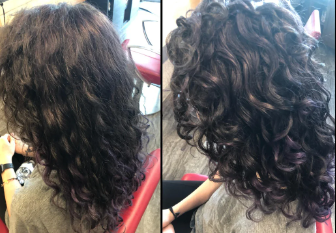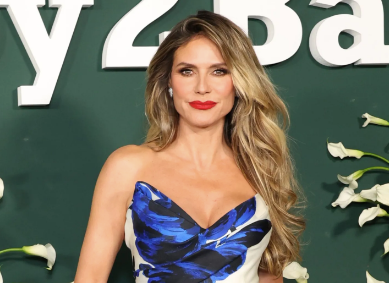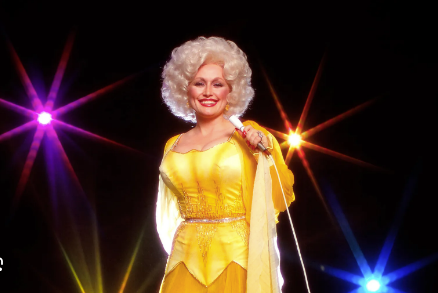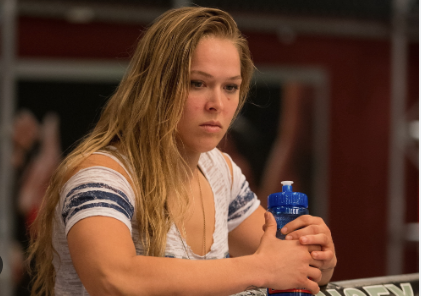Curly Hair, To qualify for this particular haircut, though, how must you be? Exactly which curl forms would seem to be debatable given a deva cut. This post will go over what a deva cut is, who it’s best suited for, how to find out whether your curls are the correct texture, and often asked questions about obtaining this curl-centric cut
Table of Lists
- Table of Lists
- Describe Cut.
- The Philosophy Driving Customizing to Curl Pattern
- Cutting Techniques Advantage for Curly Hair
Is Your Hair Curly Enough?
Type Recommendations for the two tightest curls: 3C and 4C. Two A, two B, two C loose waves
In between textures: 3A and 3 B. The dispute is: Wavy Hair: assessing whether my hair qualifies
Examine Your Base Texture, Analyze Damage, and Background Information.
Hiring a stylist should confirm their training.
One haircutting method designed especially to maximize the natural curl pattern is a Deva cut. Using straight lines and rough edges, conventional cutting techniques often center on the total length of the hair. For straight or wavy hair, this can be great, but it usually disturbs curly hair. The deva cut approaches with more subtle, curl-by-curl action.
The Viewpoint behind It
Salon operator Lorraine Massey invented the deva cut. Based on her belief, curls should be clipped in keeping with their natural shape rather than under forced, straight lines. The aim is to design something that complements the natural texture of the hair. This lets the curls break forth in their full, lovely form.
Customizing in line with Curl Pattern
Customizing the deva cut to the particular curl size and pattern of the customer is a key element of it. This entails attentively reviewing every part of each curl and adjusting your trimming. Usually, integrated to eliminate extra weight and highlight the greatest curl development are shorter layers. Unlike a single blunt cut, a deva cut is more like giving every curl its customized haircut.
Method of Cutting
The cutting itself is accomplished with a certain technique as well. Hair is chopped curl-by-curl either using scissors or occasionally with razors. gentler lines and textures follow from this. Another important method is cutting hair in its curly form instead of straightening it first when it is totally dry. This guarantees the correct form of the curls.
Advantages
va cut has various advantages when done correctly on appropriate curl forms (more on it shortly) removes extra mass without compromising length. Corrects uneven development or overgrown hair.
Shapes curls to accentuate their best spiral form. Changes triangle forms or unusual kinks in the curl pattern; increases natural volume and bounce. Stretches tight curls for extra hang time. enables curls to behave more consistently.
Simplifies styling generally.
Knowing the nuances of what a deva cut is now, who would be the best candidate, texture-wise? Is my hair curly enough in curliness? Type Suggestions for Curl Is Enough Curliness in My Hair?
The inventors of the deva cut suggest it for curl forms ranging from loose waves to tight spirals. Stylists have different ideas, nevertheless, regarding whether particular textures are excellent options. Let us dissect some broad rules.
Three- and four-curls are the tightest.
Whether the most coiled and tightest curls profit much from a deva cut is a matter of opinion. Actually, most hairdressers consider hair types 3C and 4C to be perfect as their very well-defined spirals reflect their nature.
Main Characteristics of Type 3C and Type 4C Curls
Texture Extremely
Texture Extremely tightly coiled, kinky, might have an “S” form, and shrinks easily in dry stranding. scale Small to exceptionally tiny appearance Well-defined rings or coils; some may mix into tighter curls or bigger spirals. These textures stand to benefit most from a cutting technique tailored for curls. The tightly coiled form fits very nicely for being sculpted curl by curl. Layers help significantly with bulk reduction. Advocates of the curly girl approach swear by routinely deva cutting 3C and 4C hair.
<h2><h2>Two A, two B, two C loose waves
Whether the opposite end of the range, looser waves and curls, should choose the specific deva technique is a topic of some debate. Some stylists contend it’s best saved for coiled textures requiring special consideration for curl development. Others claim hairdressers certified in the Devachan method are qualified to deva cut any type of curly hair.</p>
Fea
tures of Loenser Curl Patterns
Sort Key Attributes
2A: Loose, stretched-out S-waves.
2B: somewhat more pronounced movement and waves
2C: Some ringlets may be present; fuller waves
producing spirals and coils
Those in support argue that by improving wave pattern, removing damaged ends, thinning down density, and supporting more defined clumping, a deva cut can still be beneficial for types 2A-2C. The knowledge required is more, though, with these textures than with tight curls. Not all deva-trained stylists feel quite at ease cutting free waves and curls.
Three A and three B in-between textures
Regarding the textures in between tightly spaced coils and free waves, the deva cut also gets great comments. Though looser than their closely coiled counterparts, hair types 3A and 3B have clearly defined ringlets and coils.
Features of Medium Curls Sizes
3A qualities, Traits 3B
formation of Curl Spirals and ringlets, including some wave clearly clear spiral patterns and corkscrews.
Size of Coil: Coils the size of a pencil, Pencil to coils the size of straws.
Textures of Hair Strata with medium-thickness, Denser, thinner strands
Almost all stylists agree that these looser spirals and ringlets look just perfect using Deva cuts. Curl-by–curl cutting finds the coils to be easy. Layers applied deliberately through these textures can dramatically affect spring, shape, and volume.
The debate is on wavy hair.
Whether wavies should choose the specialist deva technique seems to be the source of most conflict. Some stylists contend that waves lack sufficient spiral form to help. Others argue that a talented deva-trained stylist knows all textures, including kinds 2A through 2C. Customized cutting, in their view, enhances waves and solves frizz problems.
All things considered, then:
Perfect curl forms for deva cuts: 3C and 4C. Three A and Three B, respectively. Also seen as excellent options based on salon knowledge. In 2A to 2C: There is some argument on whether these looser waves and curls call for the exact cutting techniques of a properly educated deva stylist. Knowing which textures would match a deva cut, how would you find out if your curls fit the cut? Let’s review approaches to evaluate your strands.
Knowing which textures would benefit from a deva cut now helps you determine whether your curls fit the cut. Let’s review approaches to evaluate your strands.
Judging Whether My Hair Fits
Analyzing Whether My Hair Is Appropriate If you find yourself wondering, “is my hair curly enough for a deva cut?” how do you know? These are some guidelines for your evaluation.
Examining Your Base Texture
Check your natural texture to determine your type of curl. Sometimes, styling products, damage or changes in curl pattern over time hide what your basal texture actually is.
These pointers are here:
Shampoo and condition to eliminate any current products; then, let hair air dry completely free from stylers. This brings your natural texture to light. Analyze coil or wave size, strand thickness, and curl development.
Examine several layers: Common practice is layering and various curl sizes. Look at the hair closest to your face or the crown since this best reflects texture.
Think about your hair history:
Think about your hair history: If you have childhood pictures, look back at them; was hair either incredibly tight coiled or looser waves early in life? This helps spot trends as well. Get a cut on a tester. Some hairdressers provide “curl discovery cuts,” which take off just an inch or two to see what’s under without chopping off length needlessly, if perplexed about what baseline texture is. Cross-reference preceding sections on perfect candidates after you know your curl type. You are sure that your kind falls between types 3C-4C. Look for a stylist knowledgeable in cutting all curl patterns for very loose waves or varying textures.
Evaluate Damage and Background Information.
Then check the state of your hair right now. By considering damage, chemical processing, heat styling, past cuts, and treatments you have done, a stylist can create the finest recommendations. Items to take into account:
Is hair over-moisturized, brittle, or rather dry?
Has it been keratin-treated, dyed, relaxed, or bleached? Are heat styling products your regular instrument of choice? Have you grown hair out long or trimmed it drastically shorter? Have you used deep conditioning or Olaplex, a specific treatment for curl problems? Directing future actions with a stylist about damage, issue areas, or troubleshooting efforts you have undertaken helps shape their work. For instance, several inches might need to be removed, depending on split ends, before the curl pattern can be maximized. Alternatively, if hair was just bleached, a few months for it to heal before cutting might be advisable.
Searching for a stylist
You are ready to schedule that first deva visit, and your texture seems appropriate. Not every salon providing deva cuts, though, is made equal. Here’s what to search for while choosing someone to believe in: Track your hair history and texture analysis findings to provide your Deva stylist with the complete picture from the first visit!
Verify Their Course of Instruction
The required qualification is certification straight from the Devachan salon, which calls for completion of their specific program. This comprehensive training guarantees hairdressers are competent in the curl-by-curl technique on all textures, ranging from loose waves to curly curls. Anything less is seen as dubious. Verify training specifics up front; never presume!
Look for a specialization.
Apart from instruction, look at the website and social media of a salon to find proof of curl specialization. Photo galleries should highlight deva cuts on several textures and note their certification. Devoted curl shops will also stress the need to use correct techniques, including cutting hair dry and avoiding damaging activities. This shows a great awareness of special requirements.
Are deva cuts pricier than standard cuts?
Indeed, most of the time you should expect to spend more in a deva cut. The intense training stylists must complete and the extra time needed to cut curl-by-curl do have higher costs. Remember, though, you are paying for customized talents and expertise; this is not a fast budget cut-back. By improved definition of texture and everyday maintenance simplicity, a good deva cut could save you money and frustration over time.
Coming with hair in its “virgin” form—washed, conditioned, completely air dried, free of products—is ideal for the first inspection. This lets hairdressers see your natural curl pattern and raw texture. Once they offer a specific cut and look, they could next advise a particular wash and style routine to get ready for later visits.

One Cutting Method, Specially for Curly Hair, is a Deva Cut
Final Thought
To embrace a Deva Cut is a personal trip directed by the special qualities of your hair. Examining the signs and indicators covered will help you determine whether your curls are ready to release their best with this particular cutting method.
Recall that the confidence and self-expression a Deva Cut can inspire adds just as much value as its sculpted curls. Trust your instincts, accept your natural texture, and, when in doubt, see a talented Deva Cut stylist to help you achieve a hair transformation honoring the uniqueness of your curls. Whether your curls are tightly coiled or softly wavy, the Deva Cut experience is about honoring the variety of curls and enabling you to boldly present the beauty found within your particular tresses.
Conclusion
Though opinions still differ somewhat, one thing every curl aficionado agrees on is that a good deva cut with the appropriate stylist can take your texture to amazing new heights no matter where you land on the natural hair spectrum! Celebrate those beautiful locks.
Frequently Asked Questions on Deva Cuts
Still deciding whether that specialized deva cut would fit your texture? Some of the most often asked questions have responses here.
FQS
If I deviate from the precise style suggested, will the cut look good?
Your new cut will probably air dry differently than salon-styled curls, according to an experienced Deva hairdresser. Whether hair is in its untamed natural state between washes or flawlessly dressed, the final form is precision-trimmed to flatter. You should notice wonderful curl development and still feel confident embracing hair in all its wild beauty. Though preferences will affect the maintenance required, the end result is always great texture!
How often should I have my deva cut changed?
Thanks to shrinkage and layers mixing nicely over time, many with curlier hair types can extend cuts. To get shape tweaked, though, a decent rule of thumb is visiting every three to five months. Plan frequent repairs in line with seasonal fluctuations. To find out how much to remove for best shape and health, let your hairdresser personally check the growth and curl pattern.
Will the specific cutting help my curls hold between washes?
One great benefit that deva cuts provide is stretching the time between washings! Expertly cut to reduce bulk means less weight dragging curls down and elongating them unnaturally between cleanings. Well-hydrated curls bounce back more naturally. Customizing shape also means you probably need fewer extra items to define texture.





Leave a Reply